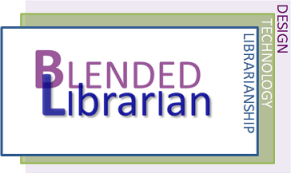Do you think about the importance of learning styles when designing your instruction activity? For many years aspiring educators were taught that effective learning was enhanced if the instruction design took into account the three primary learning styles, visual, auditory, and kinesthetic, and developed instruction that addressed individuals’ dominant preference for one of these styles.
I recall taking, in one of my basic instructional design courses, a test to determine my primary learning style. Even back then I believe we were being instructed to be cognizant of different learning styles (over 50 have been identified), which translated into designing instruction that integrated speaking or sound recordings, visual content such as videos or screenshots, and which provided learners the opportunity for hands-on activity. To this day, that mix would likely describe the core components of many library instruction sessions.
Then, in 2011, NPR ran a story featuring a psychologist who advised educators not to pay much attention to learning styles. Not only was there little scientific evidence to support the premise that people had dominant learning styles, but new research was pointing to discoveries about learning that could be more effective than teaching to different styles. This news gave learning styles doubters the opportunity to bolster their claims that it was all a bunch of hogwash. Despite the report, others continued to express their support for the validity of learning styles as an effective classroom method for connecting with learners.
As one blogger pointed out, many of the doubters conveniently ignored this quote from the original NPR article:
Mixing things up is something we know is scientifically supported as something that boosts attention,” he says, adding that studies show that when students pay closer attention, they learn better.
Maybe there is something to learning styles after all, even if it just reminds educators to mix things up so that students stay activated and are more likely to pay attention.
Fast forward to a few days ago and EdSurge featured an article titled “Why You Shouldn’t Waste Your Time With Learning Styles” by Paula Moran. Seems like someone isn’t ready to let this debate go away peacefully. If you believe you get better results by paying attention to the mix of teaching approaches you use – integrating audio, video, lecture – then by all means keep doing that.
Most of the article rehashes the lack of scientific evidence to support that learners really do have preferences (not aptitudes) for the method that best helps them learn. Moran goes on to make the important point that savvy educators will do more than just rely on learning styles to connect with students. She points to six other learning methods, such as scaffolding and discovery learning, that are better supported by scientific evidence as effective approaches. I have to agree. If you haven’t been paying attention to more recent literature on effective learning methods try reading Making It Stick.
My own approach, whether I’m in the classroom with a small group of students, giving a keynote to a room packed with librarians or leading a webinar to a mostly invisible audience, is to bring to it everything I can to keep my audience engaged and waiting to hear what I’m going to say or do next. I do tend to believe that we each have a preferred style, my own is auditory supported by a kinesthetic activity – even if it’s just taking notes. I don’t believe that people have a dominant style and that they only learn via that mode of information delivery. I may not be a strong visual learner, but go ahead and show me a video.
That means I’m going to mix things up as much as possible. My number one rule is Don’t Be Boring. If you’ve attended one of my talks you probably observed that I use few slides with text and just a limited number with static content, preferring instead to make points with video and stories. It doesn’t always work as well as I hope, but I usually am confident that I was able to connect with the audience and keep them engaged with my topic.
While we’re on the subject of learning, if you are tired of trying to figure out whether learning styles is a thing or not, take a few minutes to watch this engaging video with a group of learning experts talking about “Why Is Measuring Learning So Difficult?“. No matter what methods we use in the classroom, we still struggle to accurately define when learning has actually taken place and how we would even measure such learning. The experts do have some thoughts on this and the situation is not hopeless.
